Knee Special Tests
1/73
There's no tags or description
Looks like no tags are added yet.
Name | Mastery | Learn | Test | Matching | Spaced |
|---|
No study sessions yet.
74 Terms
Primary = ACL
Secondary = MCL, LCL
Restraint(s): anterior translation
Primary = PCL
Secondary = MCL, LCL
Restraint(s): posterior translation
Primary = MCL
Secondary = ACL, PCL
Restraint(s): valgus rotation (medial gapping)
Primary = LCL
Secondary = ACL, PCL
Restraint(s): varus rotation (lateral gapping)
Primary = MCL, LCL
Secondary = Popliteus corner
Restraint(s): lateral rotation
Primary = ACL, PCL
Secondary: Meniscofemoral ligaments
Restraint(s): medial rotation
Taut, relaxed
During lateral rotation, the collateral ligaments are ________ (TAUT/RELAXED) & cruciate ligaments are _________ (TAUT/RELAXED)
Taut, relaxed
During medial rotation, the cruciate ligaments are _________ (TAUT/RELAXED) & collateral ligaments are _________ (TAUT/RELAXED)
MCL only
Instability: one-plane medial
LCL only
Instability: one-plane lateral
ACL only
Instability: one-plane anterior
PCL only
Instability: one-plane posterior
Medial meniscus, coronary ligament, OPL
Instability: anteromedial rotatory
ACL, LCL, other soft tissue structures
Instability: anterolateral rotatory
MCL, posterior oblique
Instability: posteromedial rotatory
LCL, arcuate ligament complex
Instability: posterolateral rotatory
MCL
Which ligament is tight t/o the entire ROM?
LCL
Which ligament is tight during extension and loose in flexion (esp. after 30 degrees)?
ACL
Which ligament prevents anterior movement of the tibia, checks lateral rotation, limits extension & hyperextension of knee?
PCL
Which ligament is the STRONGEST ligament in the knee and functions as the primary stabilizer against posterior movement of the tibia on the femur?
Abrupt & firm stop
Which end-feel is normal for the George Davies knee algorithm?
Soft or indistinct end-feel
Which end-feel is abnormal for the George Davies knee algorithm?
Sag sign -- PCL
Which special test is this? What does it test?
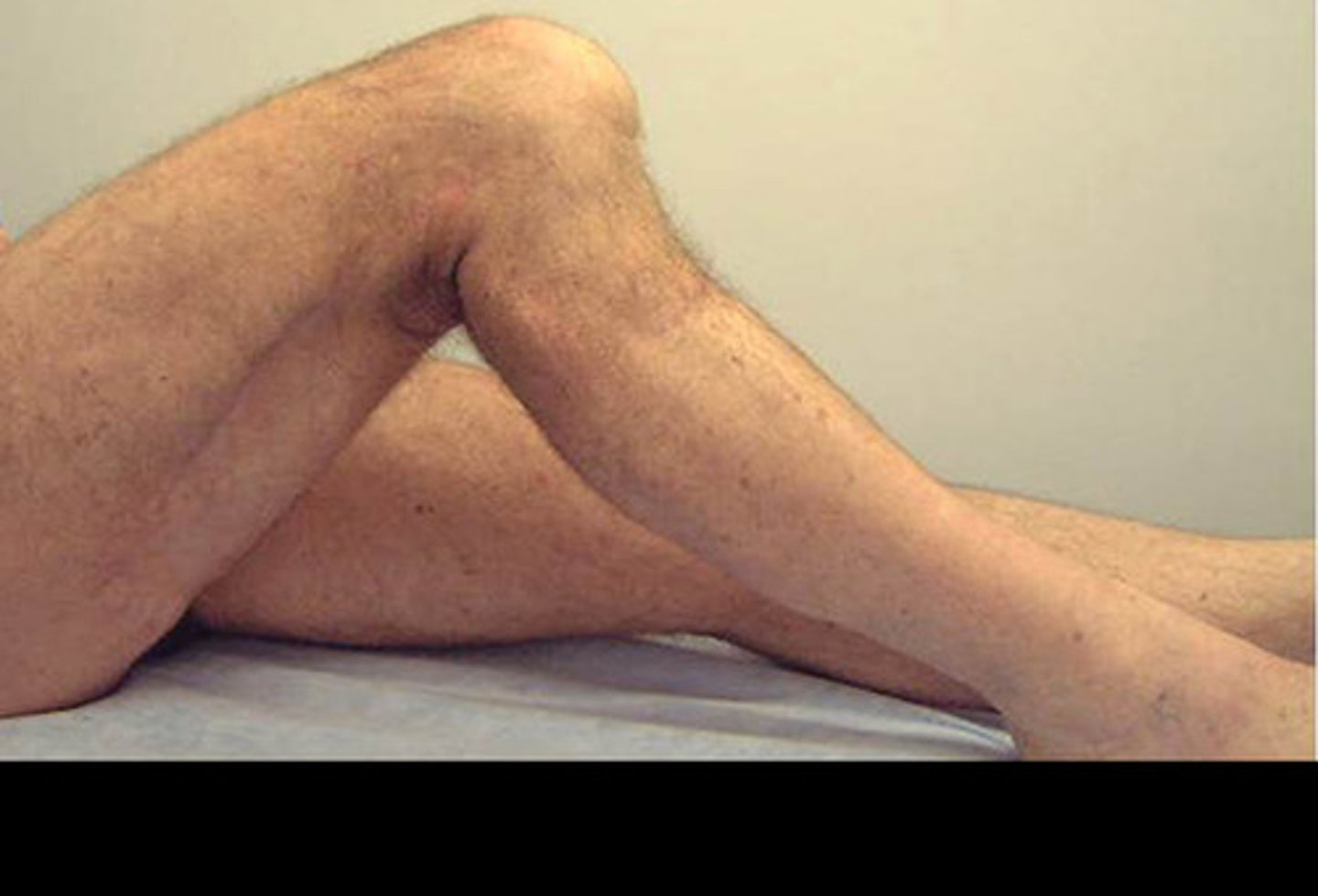
Tibia sags posteriorly
What is a (+) sag sign?
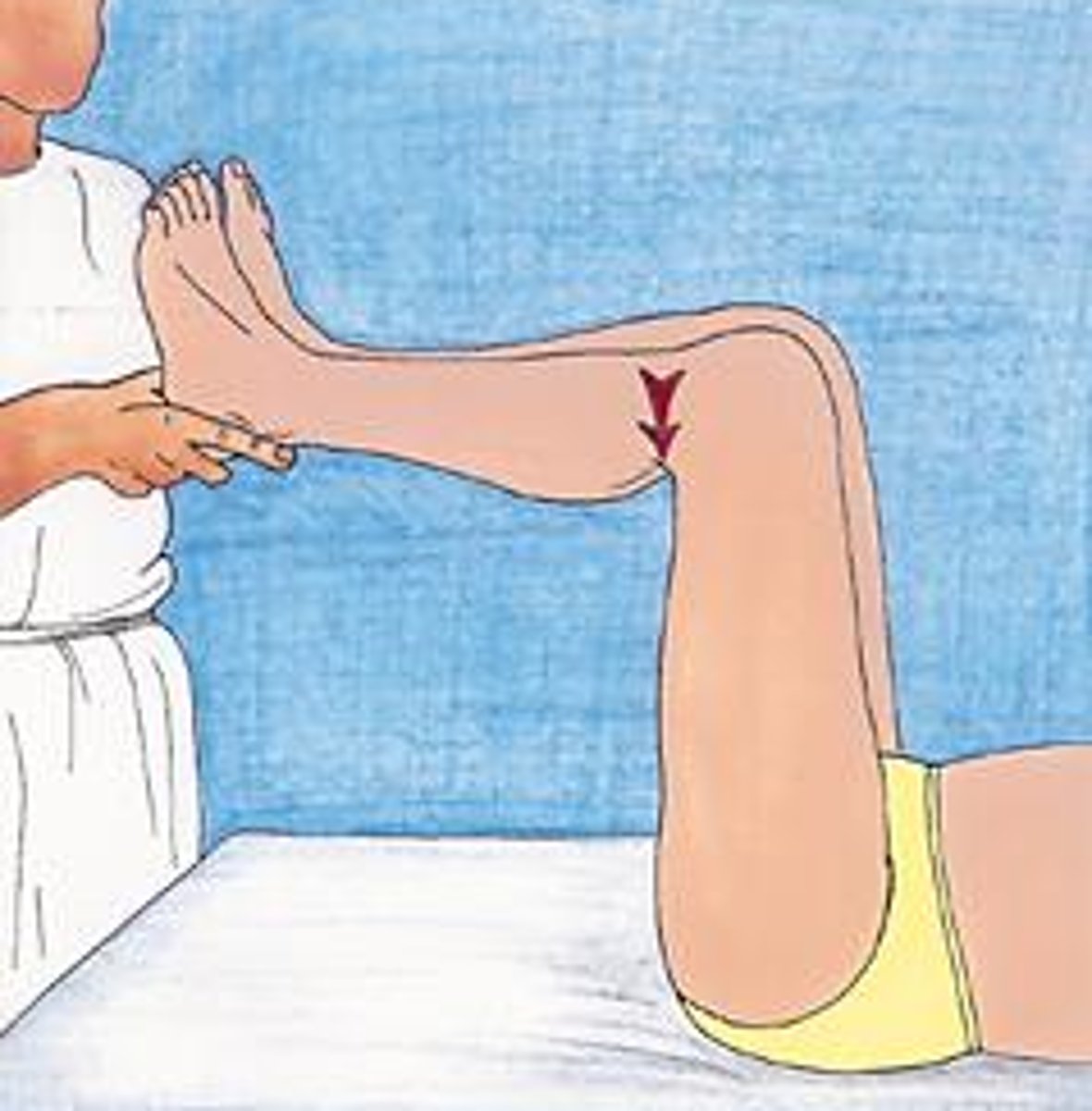
Active drawer -- PCL
Which special test is this? What does it test?
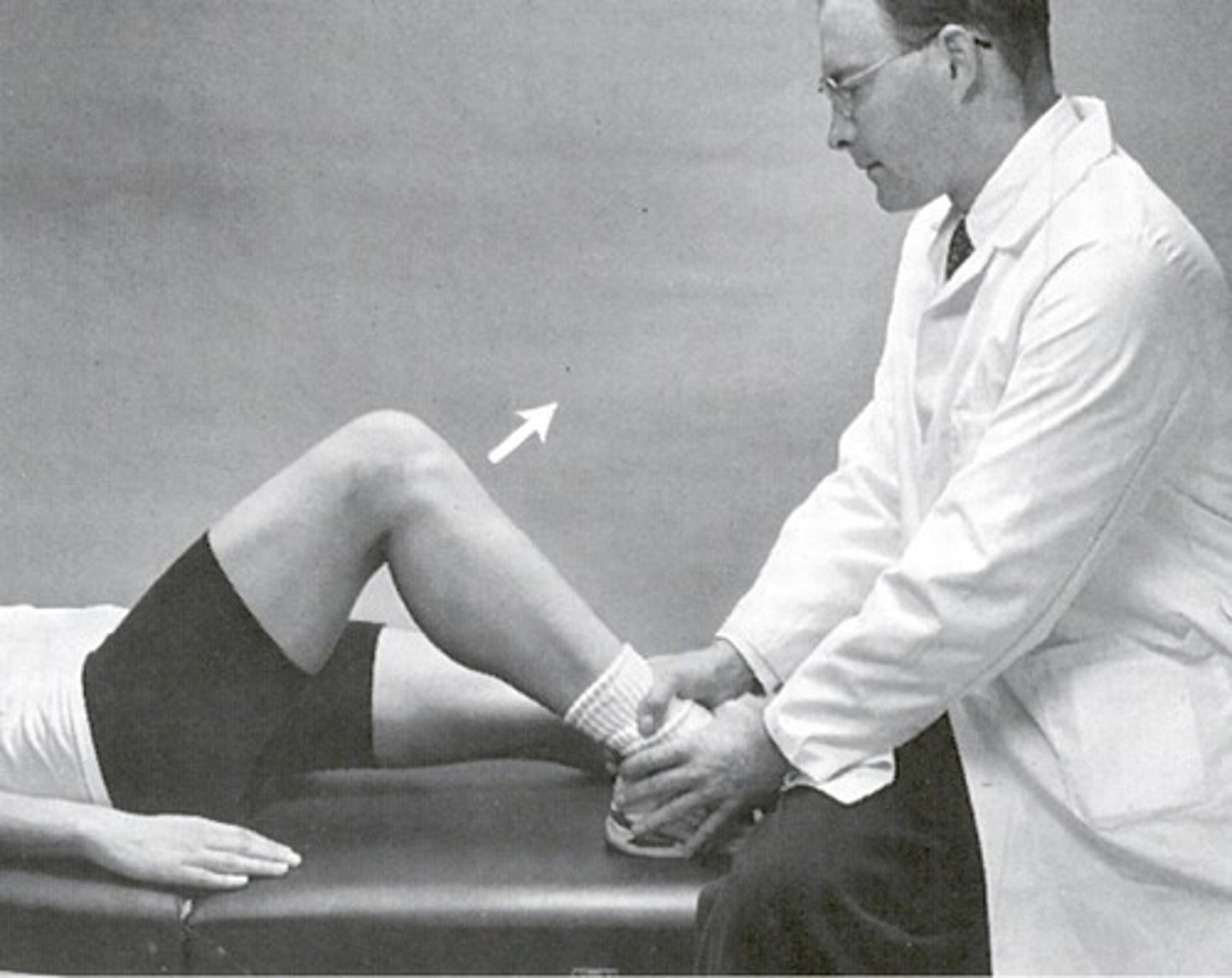
Tibial plateau moves forward to its normal position, indicating that the tibia was previously posteriorly subluxated
What is a (+) active drawer test?
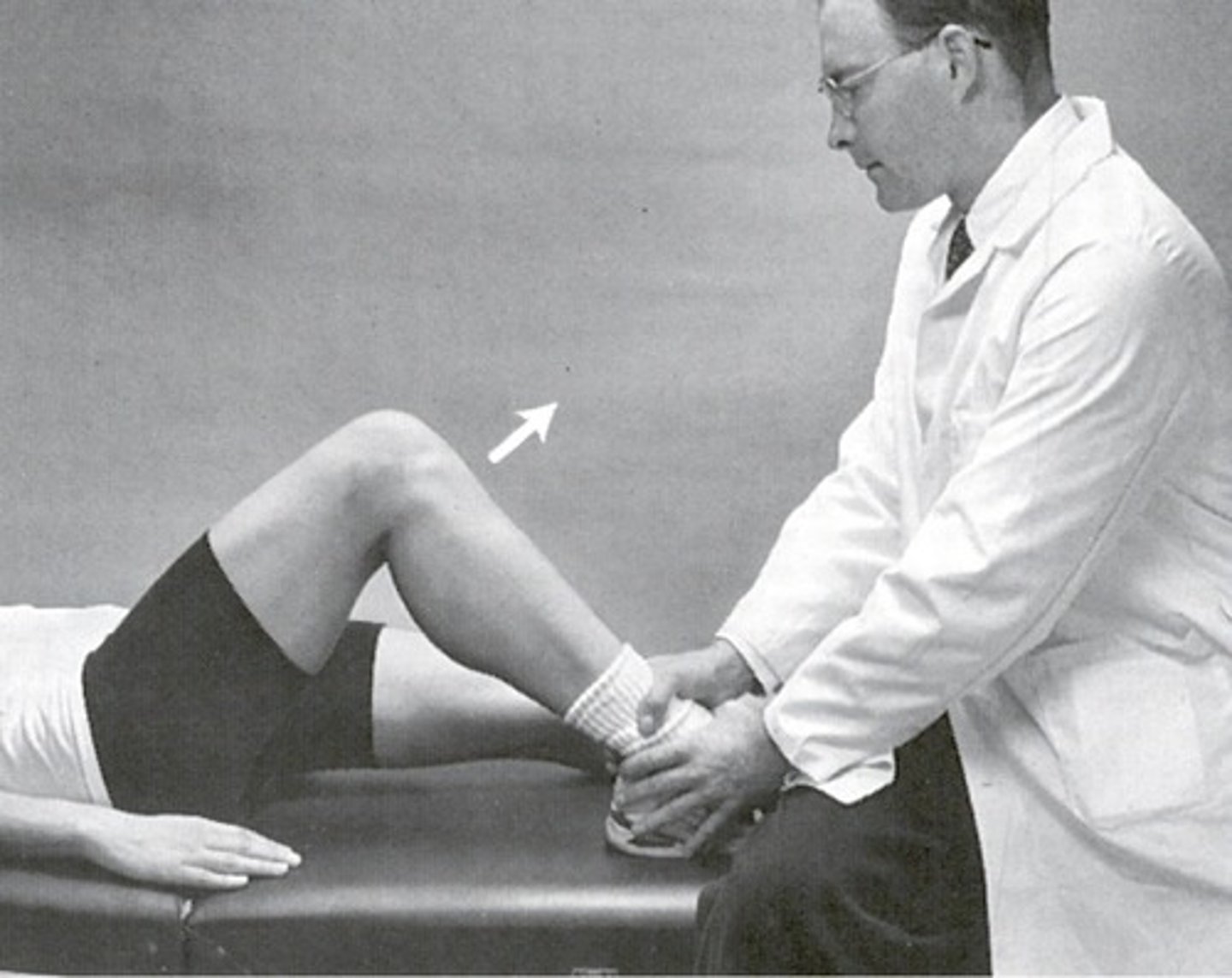
Posterior drawer -- PCL
Which special test is this? What does it test?
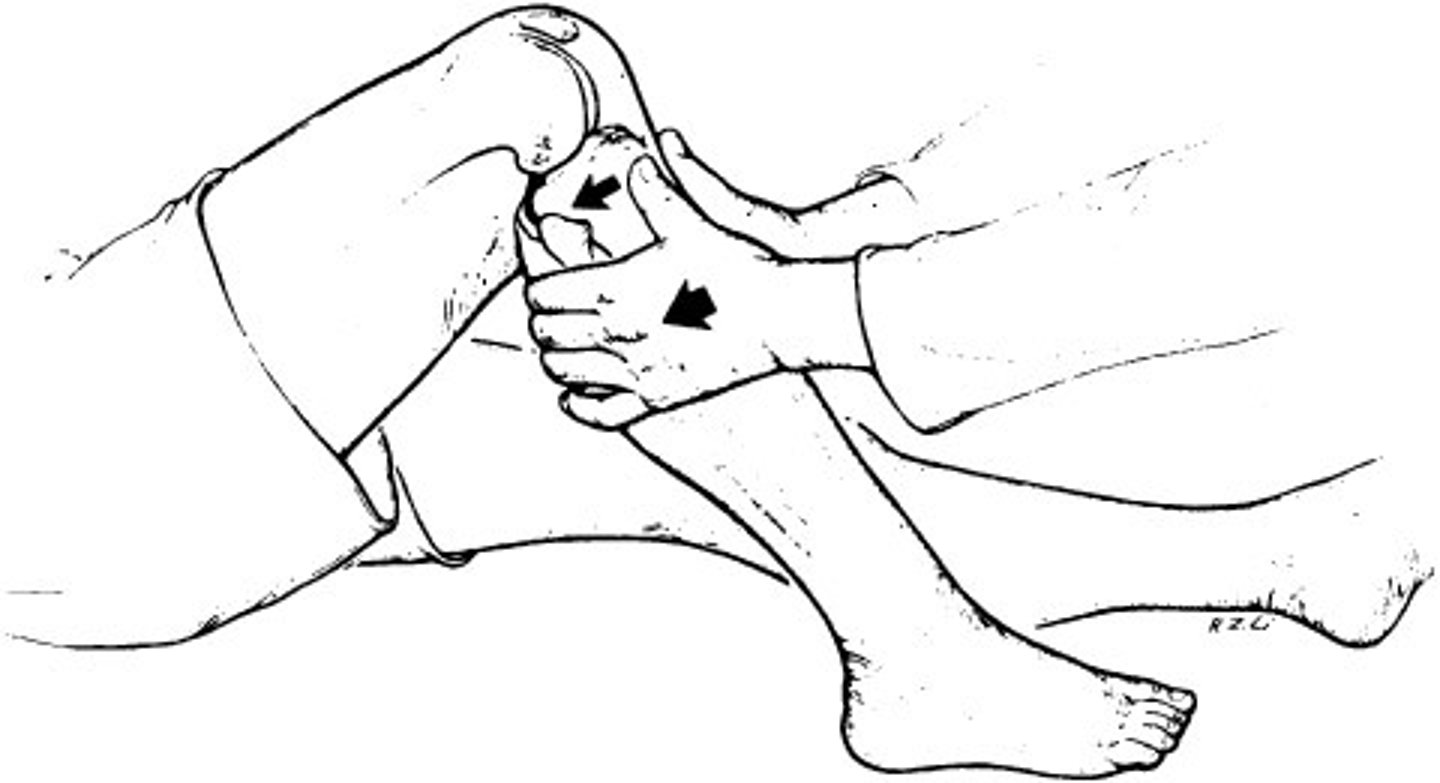
Lack of end feel or excessive posterior translation
What is a (+) posterior drawer?
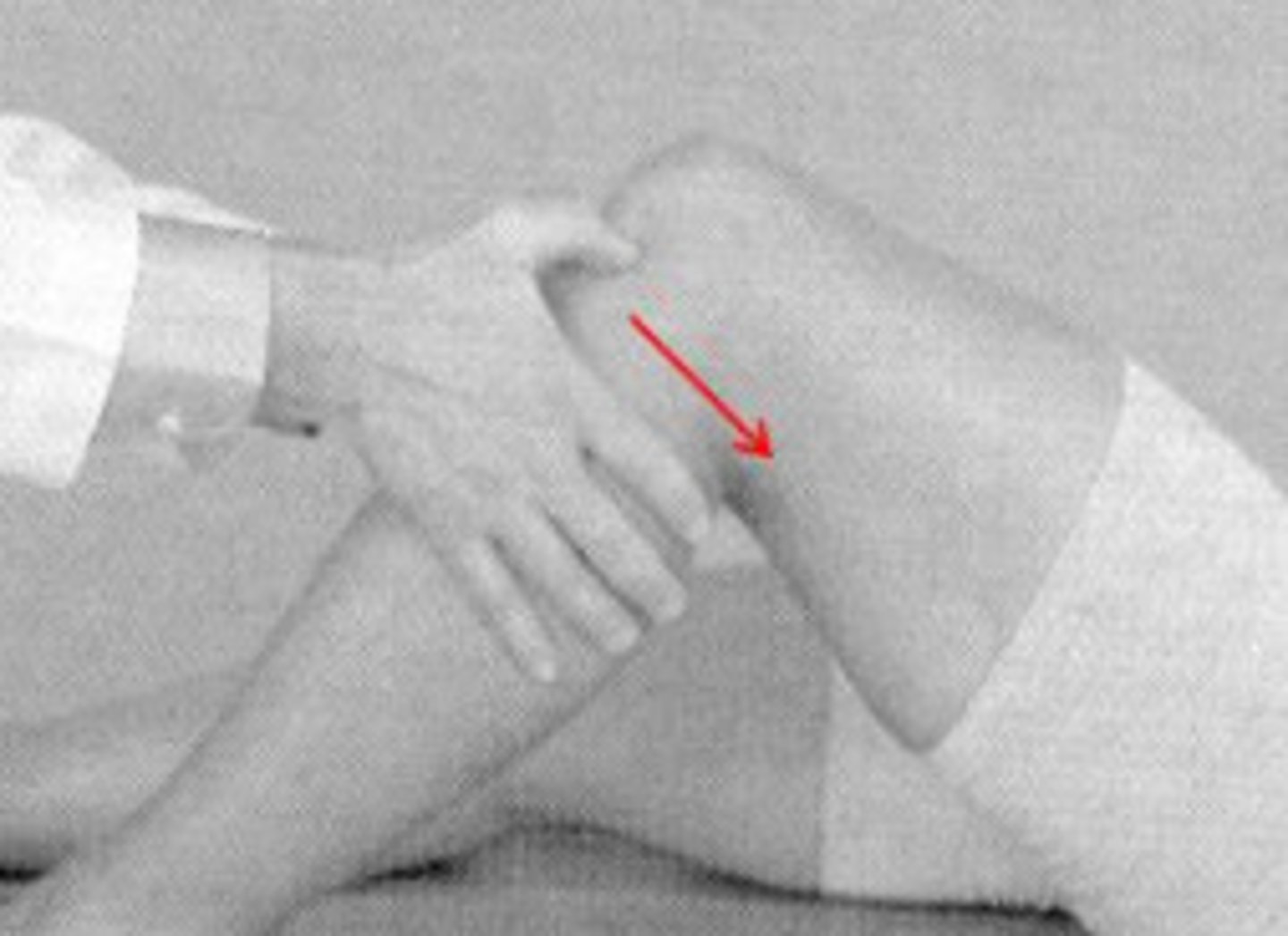
Anterior drawer -- ACL
Which special test is this? What does it test?

Lack of end feel or excessive anterior translation relative to contralateral side (normal translation is approx. 6 mm)
What is a (+) anterior drawer test?

Lachman's -- ACL (considered the BEST test for assessing the ACL)
Which special test is this? What does it test?
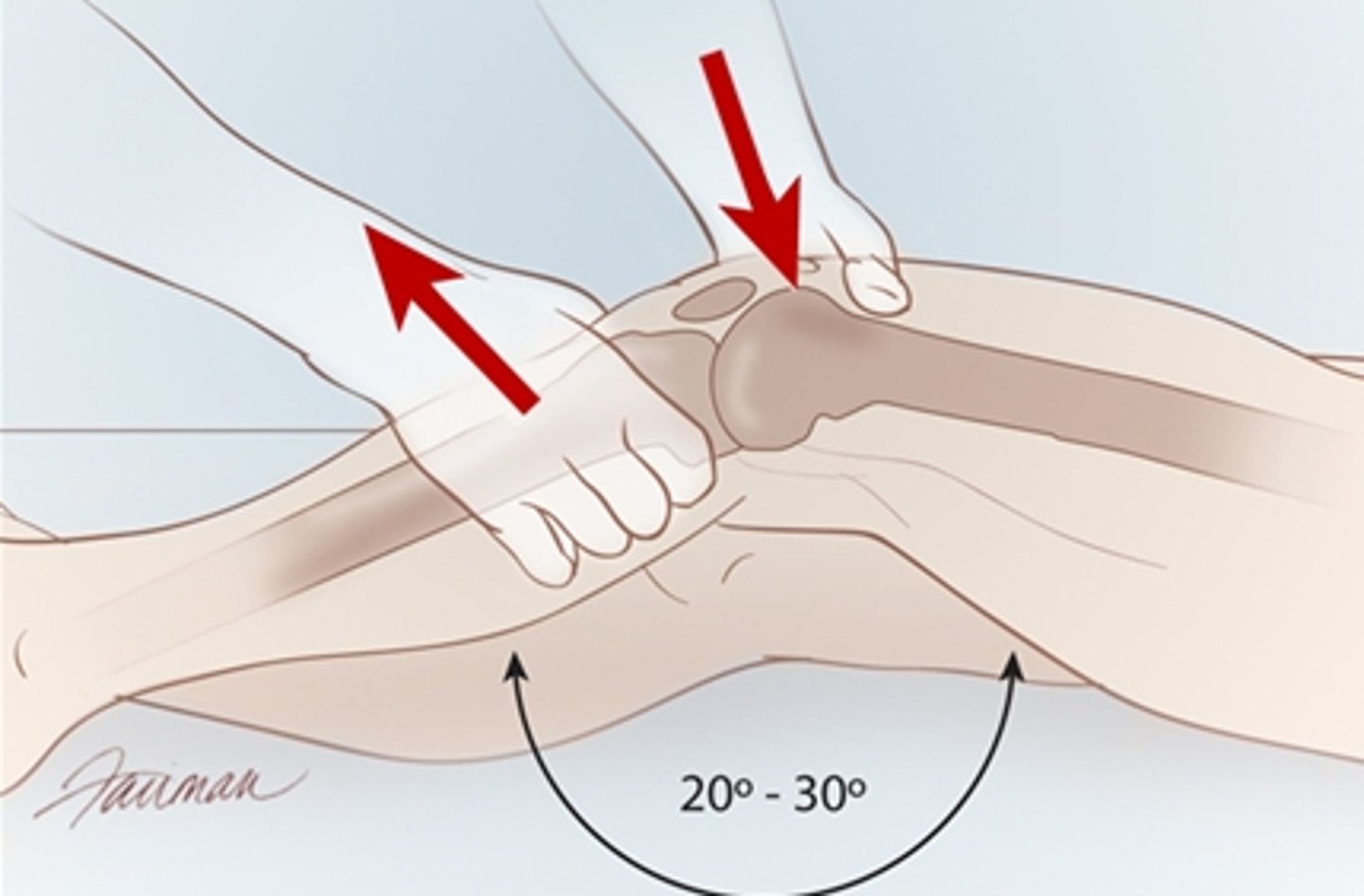
"Soft" or "mushy" end feel
What is a (+) Lachman's test?

Valgus stress test @ 0 & 30 -- MCL
Which special test is this? What does it test?

Varus stress test @ 0 & 30 -- LCL
Which special test is this? What does it test?

Excessive laxity/gapping compared to the uninvolved side
What is a (+) valgus stress test?
Excessive laxity/gapping compared to the uninvolved side
What is a (+) varus stress test?
PCL -- if the PCL is torn, the tibia will sag backwards --> false (+) during ACL testing
Which ligament should you start w/ testing when suspicious of a ligamentous injury? Why?
Active drawer (examiner sits on the pt's involved foot and instructs them to push their foot into your leg to see if it reduces)
If a sag sign is present, which test can you perform?
Posterior drawer
If a sag sign is present, which test do you NOT need to perform bc it will be a false (-)?
Lachman's
Which test is considered the BEST test for assessing the ACL?
MAJOR disruption
If there is a (+) valgus stress test @ 0, what does this mean?
More isolated assessment of one-plane medial instability
If there is a (+) valgus stress test @ 30, what does this mean?
More isolated assessment of one-plane lateral instability
If there is a (+) varus stress test @ 30, what does this mean?
Dial -- posterolateral rotary instability (LCL, arcuate ligament complex; posterolateral corner)
Which special test is this? What does it test?
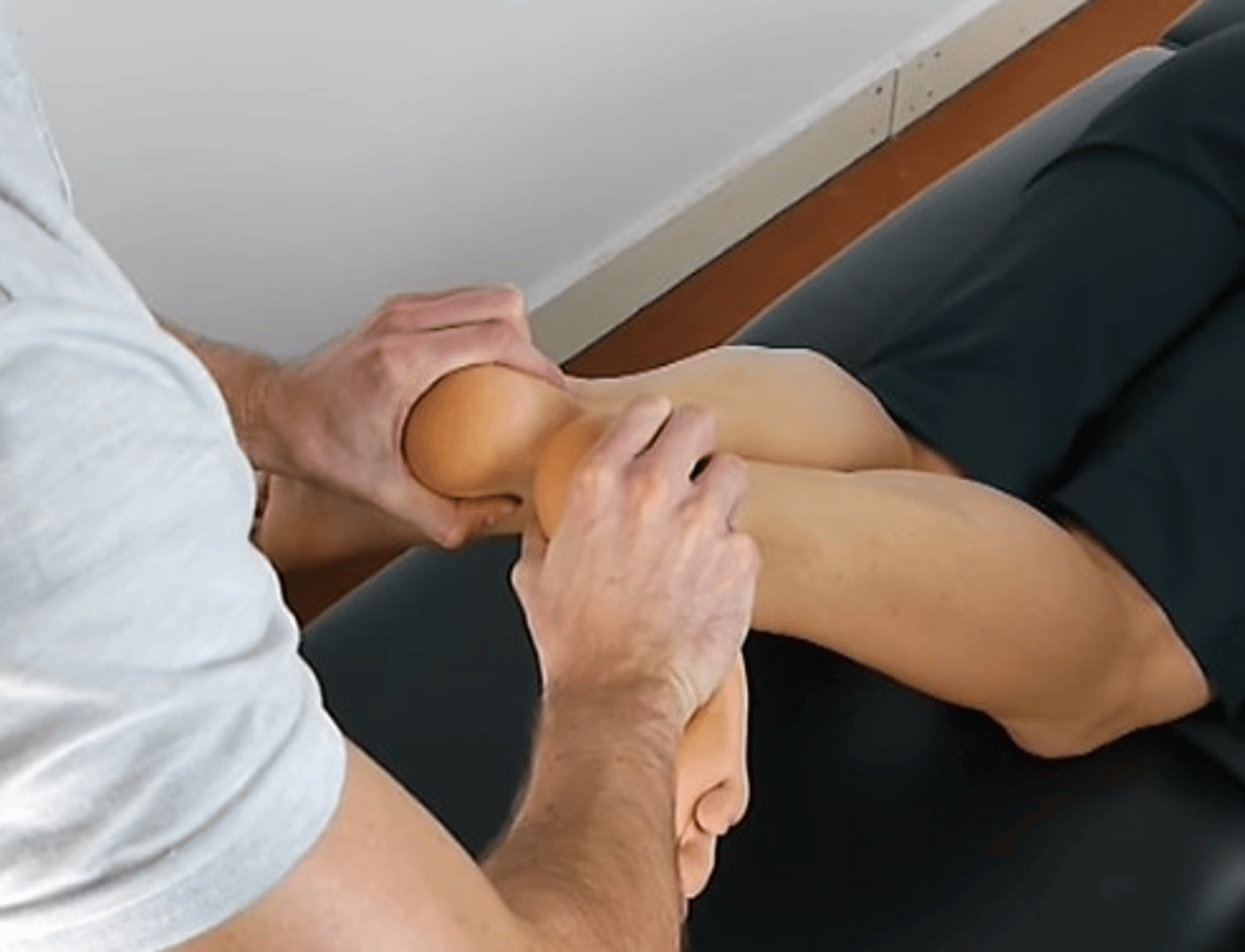
Excessive rotation
What is a (+) dial test?
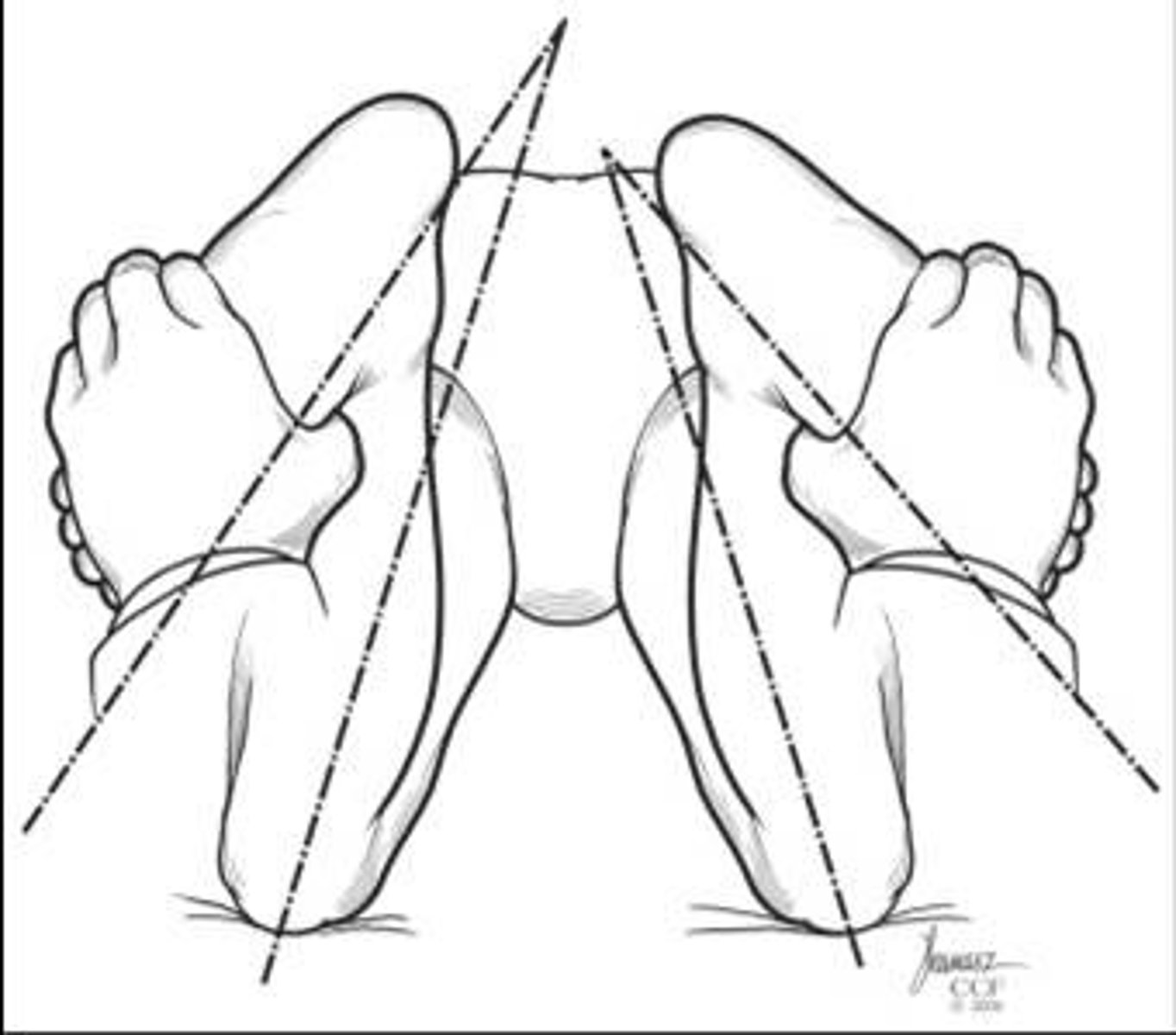
Pivot shift -- anterolateral (ACL, LCL, other soft tissue structures)
Which special test is this? What does it test?

Subluxation of the tibia while the femur rotates externally --> reduction of the tibia @ 30-40 degrees of flexion due to tightening of the IT band
What is a (+) pivot shift test?
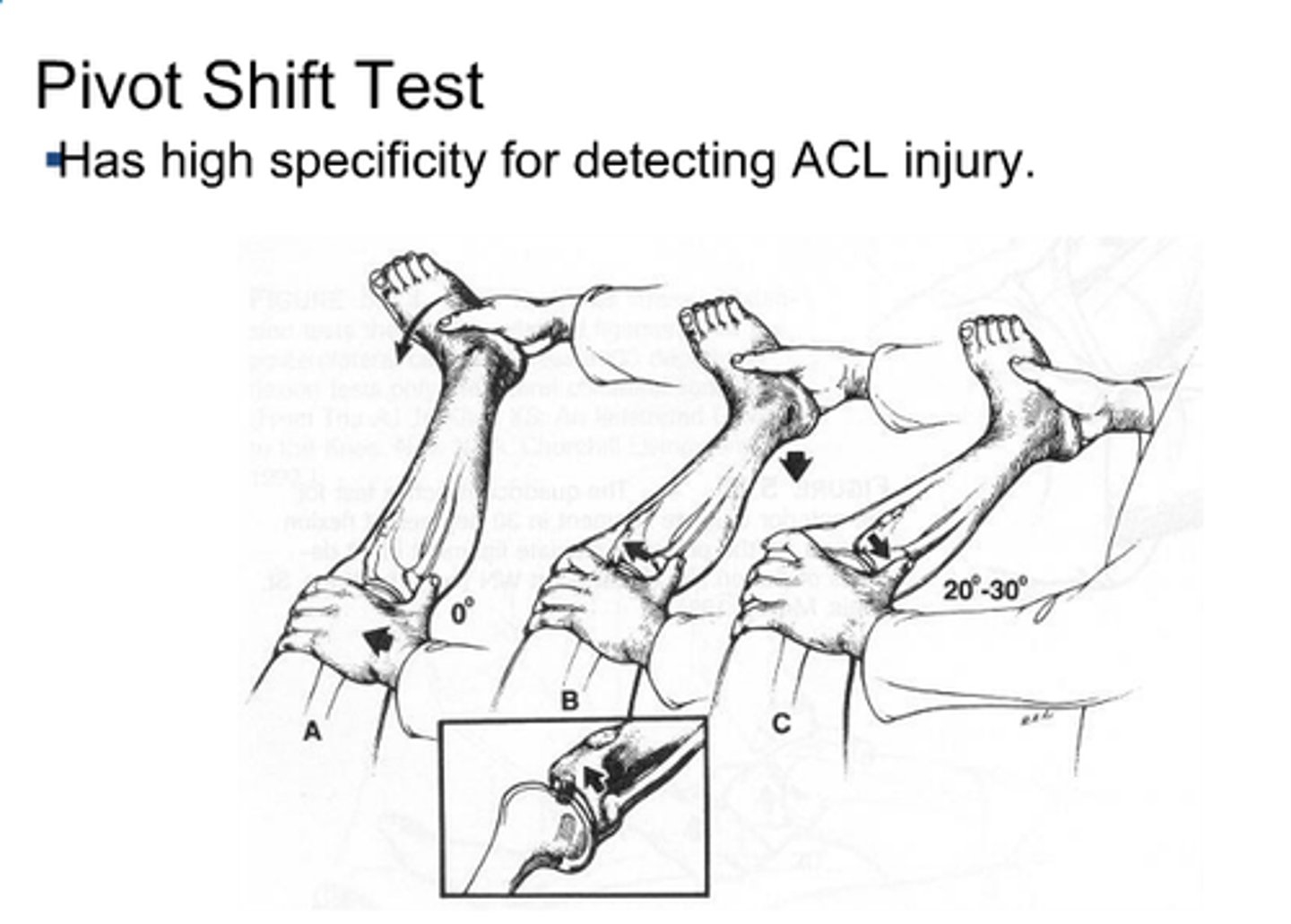
Jerk -- anterolateral (ACL, LCL, other soft tissue structures)
Which special test is this? What does it test?

At approx. 20-30 degrees of flexion, the tibia shift forward causing a subluxation of the lateral tibial plateau --> subluxation reduces in extension
What is a (+) jerk test?
Slocum
- anterolateral w/ medial rotation
- anteromedial w/ lateral rotation
Which special test is this? What does it test?
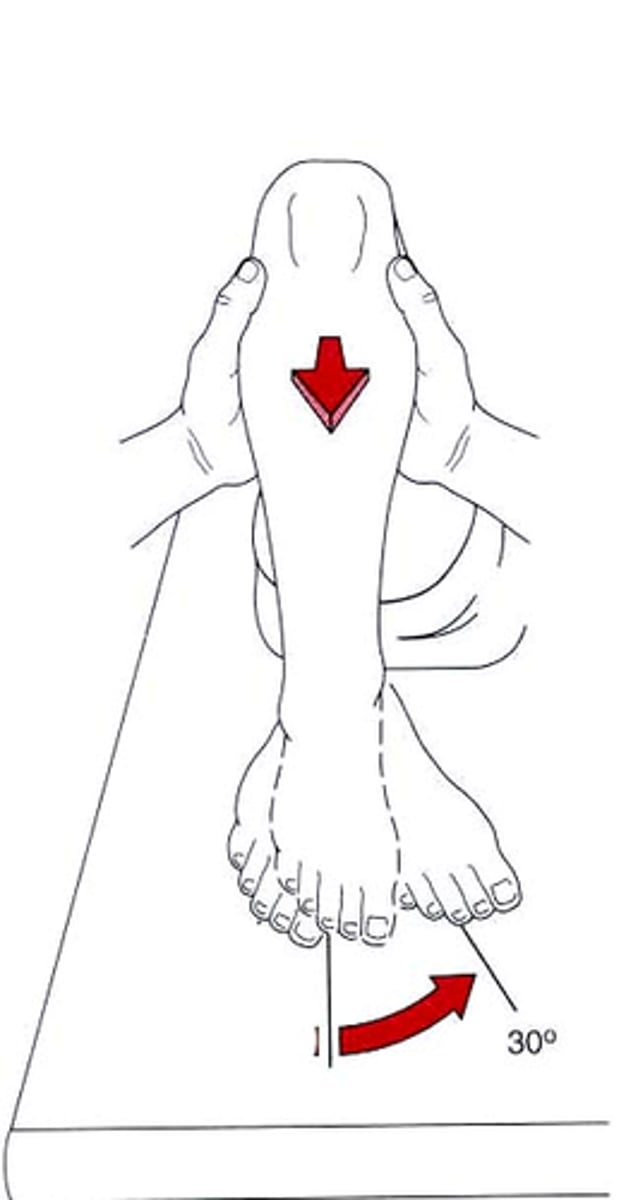
Movement occurs primarily on the medial or lateral side of the knee
What is a (+) slocum test?
McMurray
- lateral meniscus = medial rotation
- medial meniscus = lateral rotation
Which special test is this? What does it test?
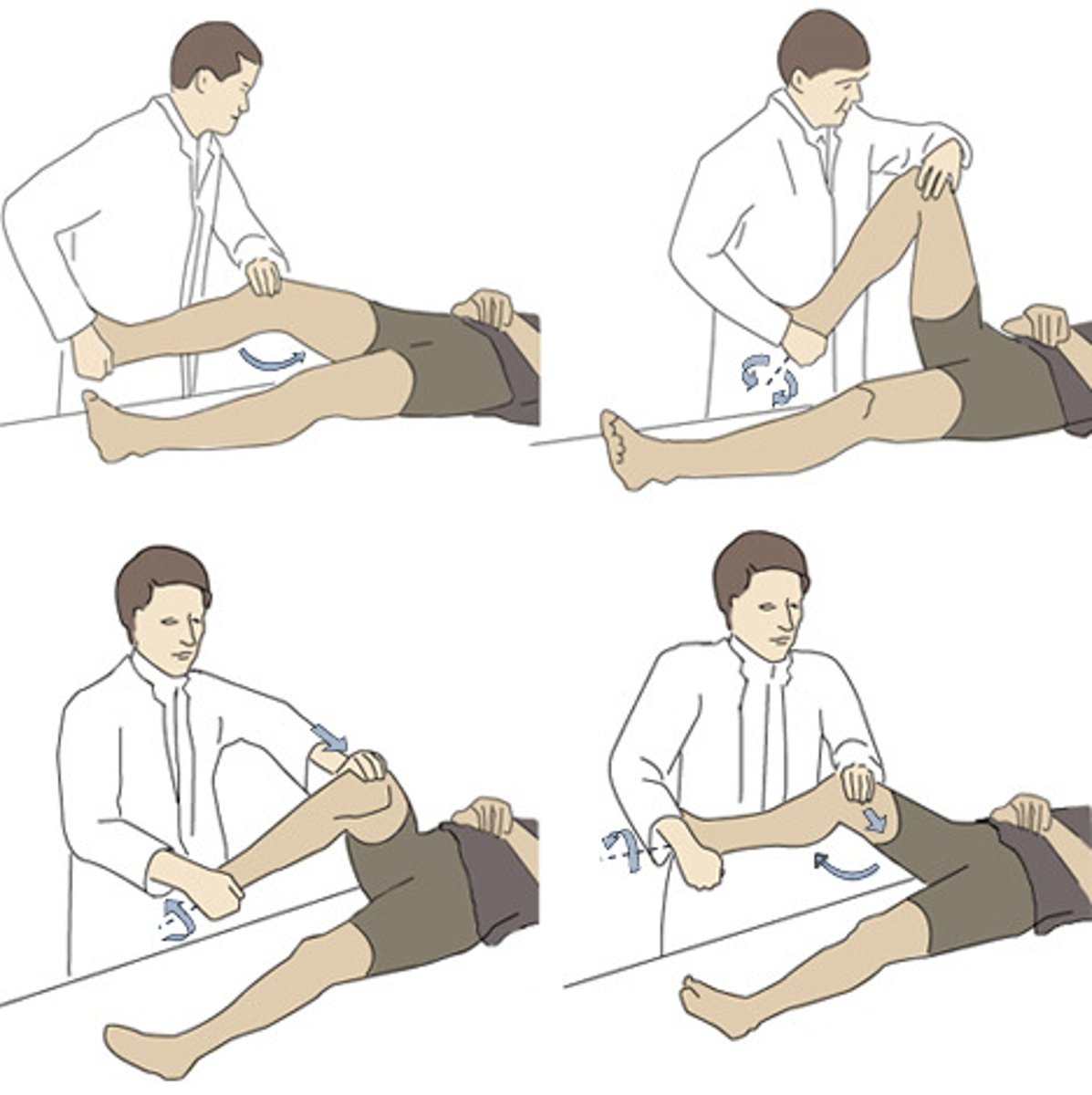
Snap or click is often accompanied by pain
What is a (+) McMurray test?
Apley's compression/distraction
- distraction = ligamentous
- compression = meniscus
Which special test is this? What does it test?
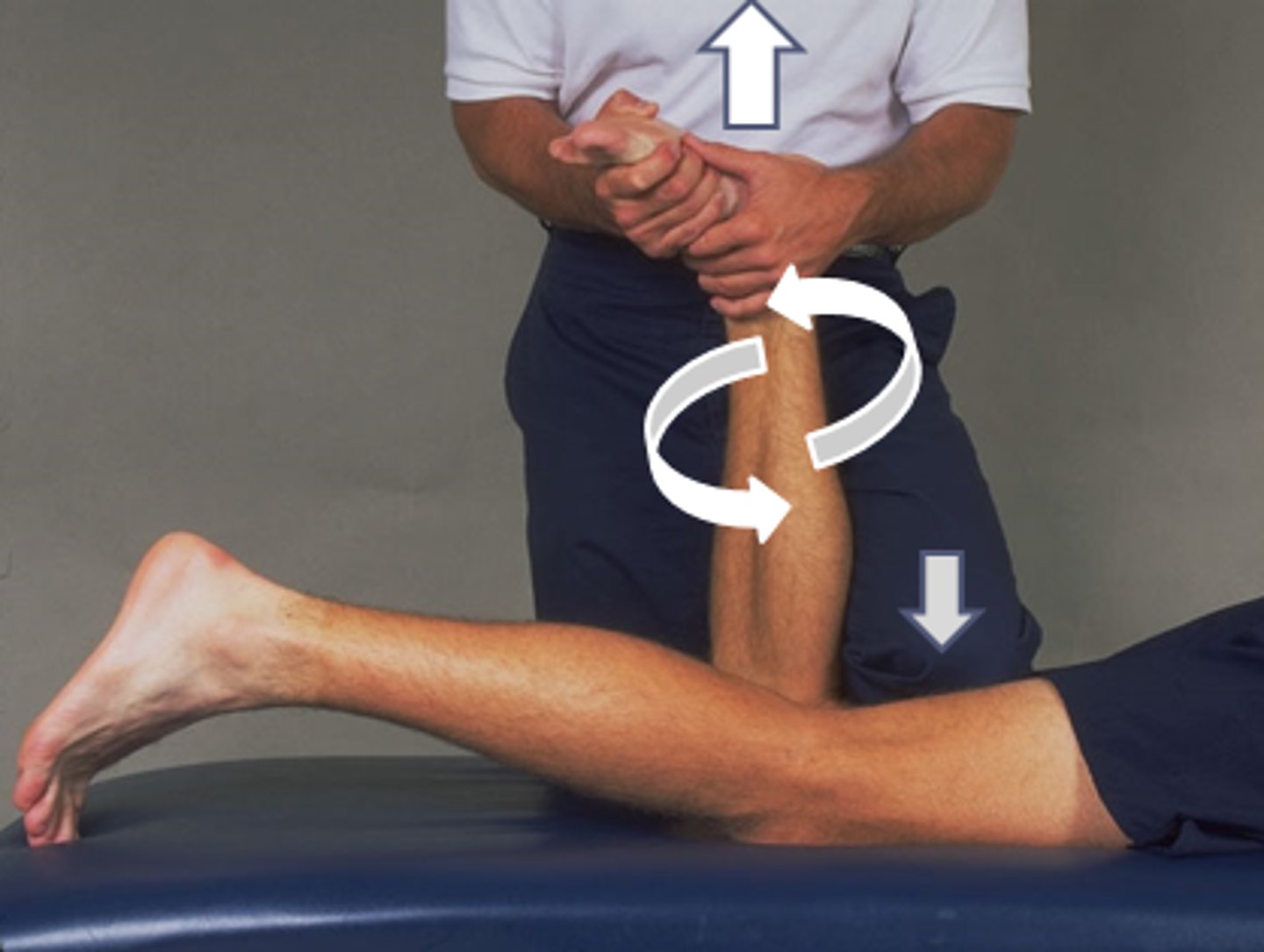
Distraction more painful or shows increased rotation --> ligamentous lesion
Compression more painful or shows decreased rotation --> meniscus injury
What is a (+) Apley's compression/distraction test?
Thessaly -- meniscus
Which special test is this? What does it test?

Ege's
- medial meniscus = ER
- lateral meniscus = IR
Which special test is this? What does it test?

Pain and/or click
What is a (+) Ege's test?
Effusion assessment
Which special test is this? What does it test?
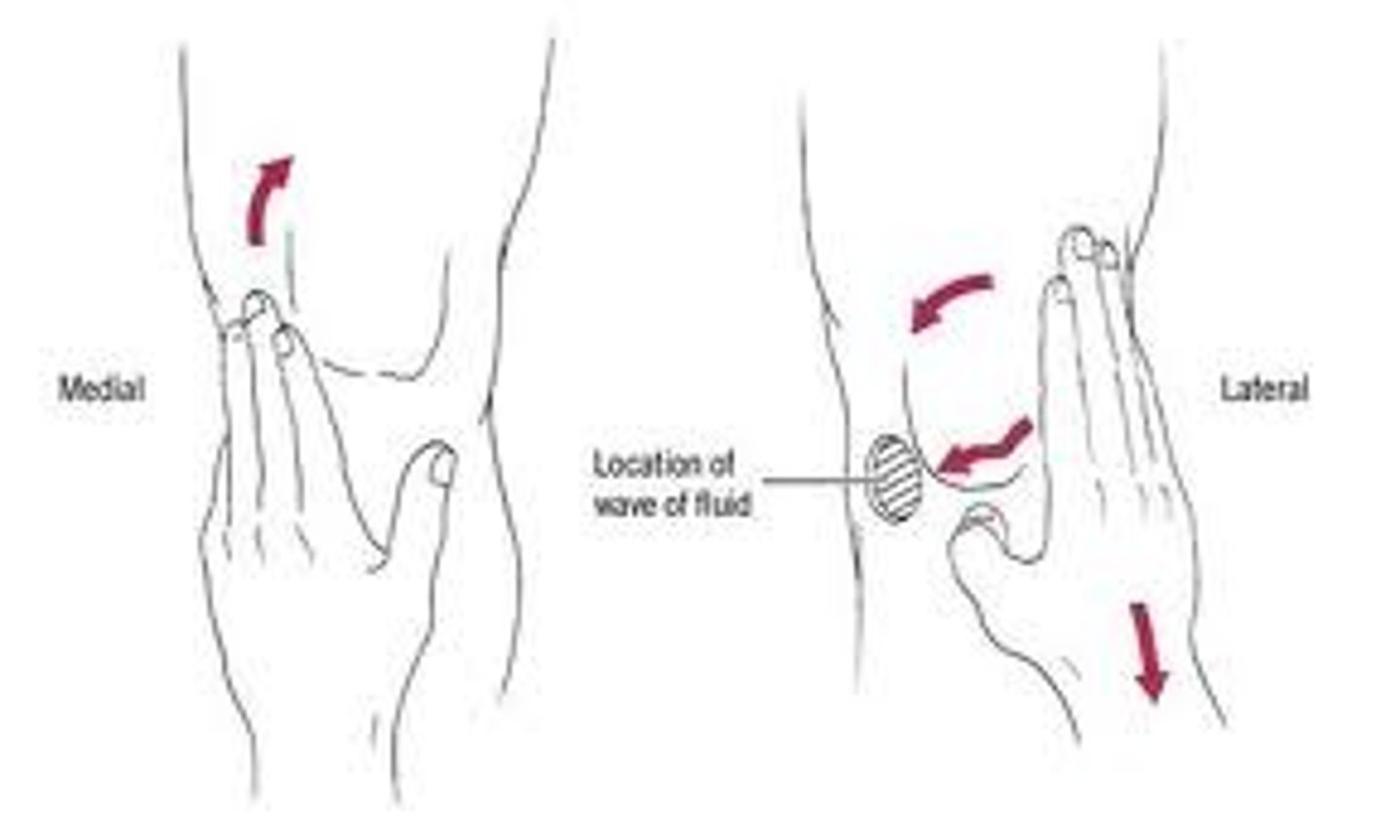
Grade zero
Grade _____: no wave produced on downstroke
Grade trace
Grade _____: small wave on medial side w/ downstroke
Grade 1+
Grade _____: larger bulge on medial side w/ downstroke
Grade 2+
Grade _____: effusion spontaneously returns to medial side after upstroke (no downstroke necessary)
Grade 3+
Grade _____: so much fluid that it is not possible to move the effusion out of the medial aspect of the knee
Patellar tilt -- patellofemoral pain syndrome
Which special test is this? What does it test?
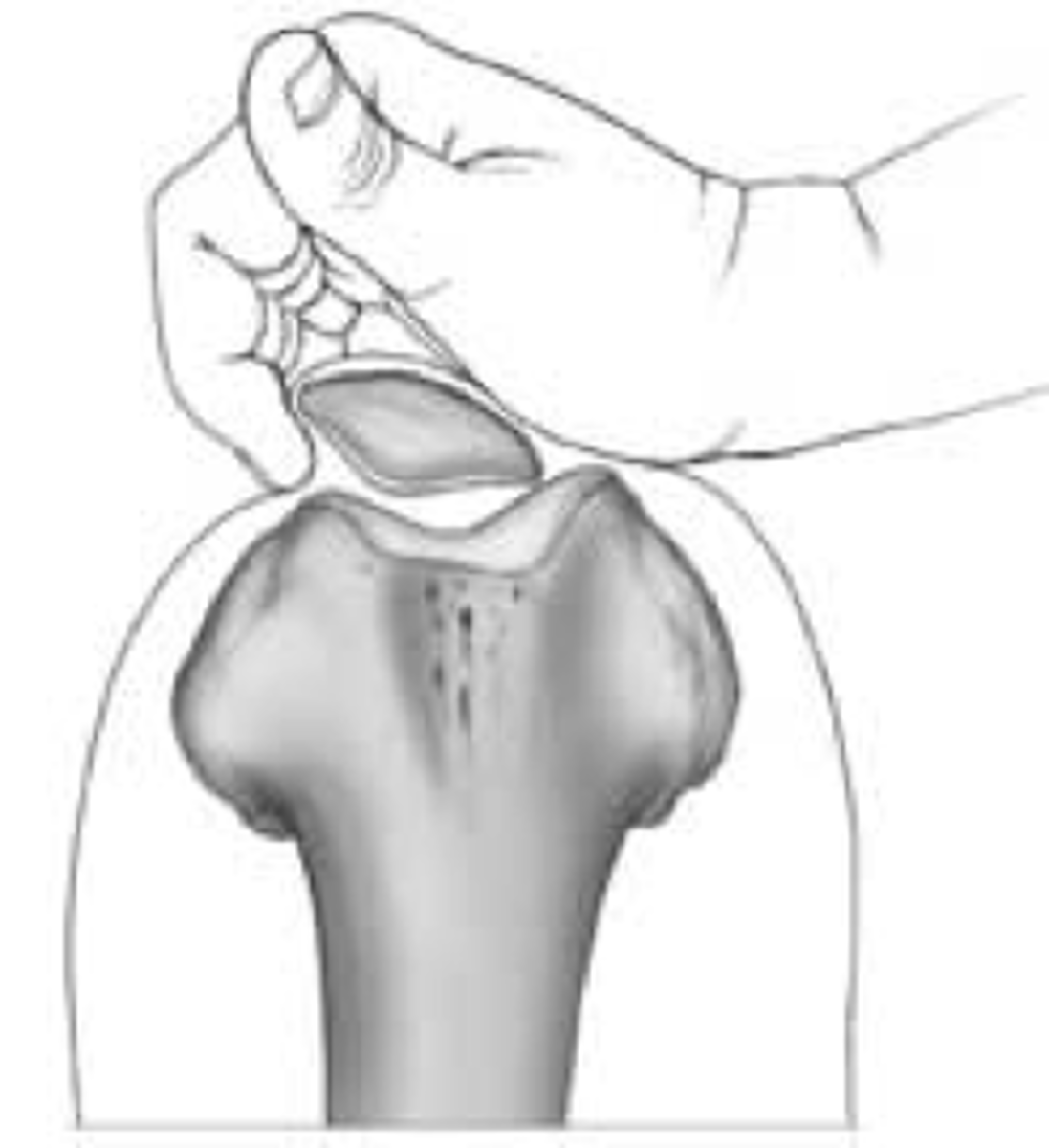
Apprehension -- patellofemoral pain syndrome
Which special test is this? What does it test?
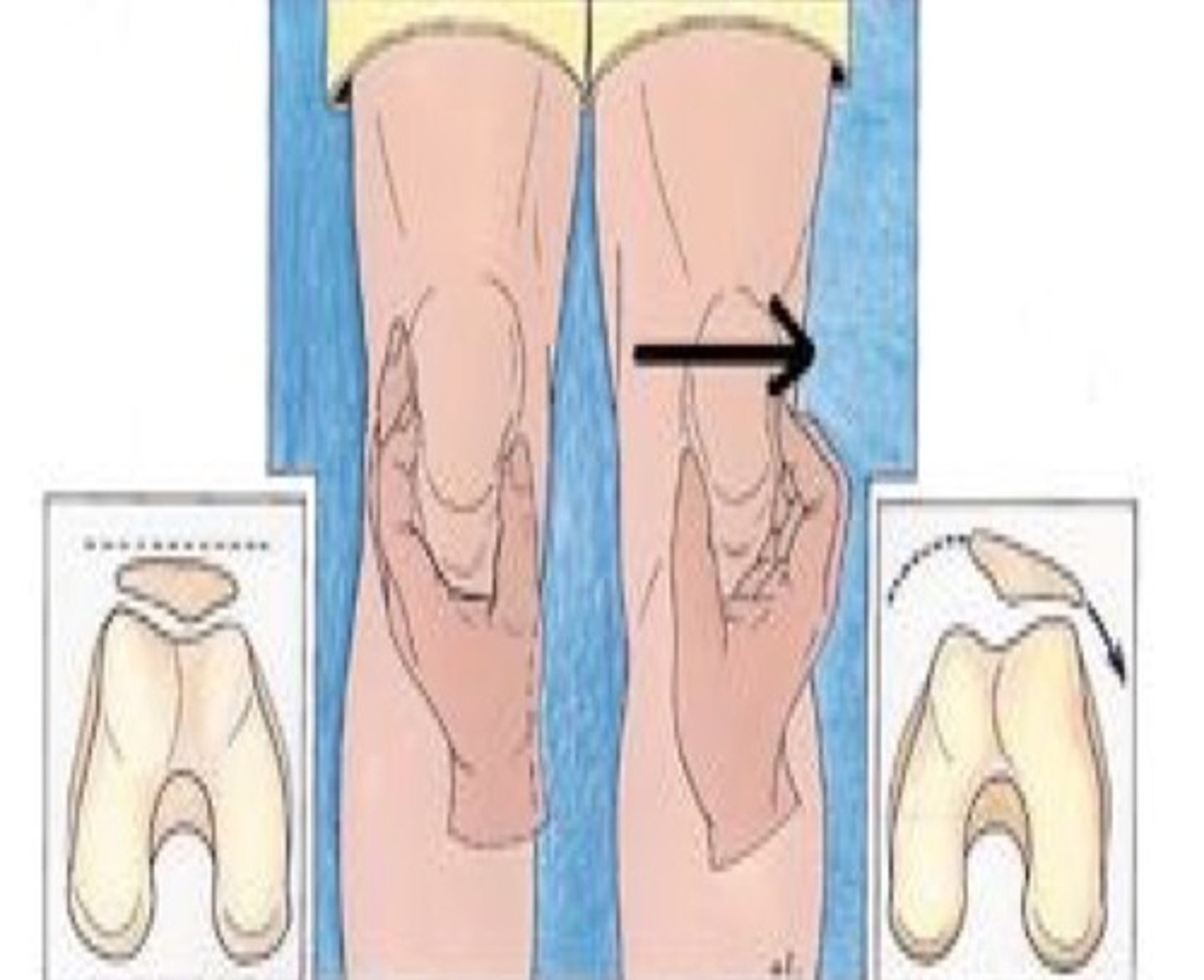
Moving out of the groove and subluxing laterally
What is a (+) patellar tilt?
Reproduces patient's pain, apprehension
What is a (+) apprehension test?
Waldron -- patellofemoral pain syndrome
Which special test is this? What does it test?
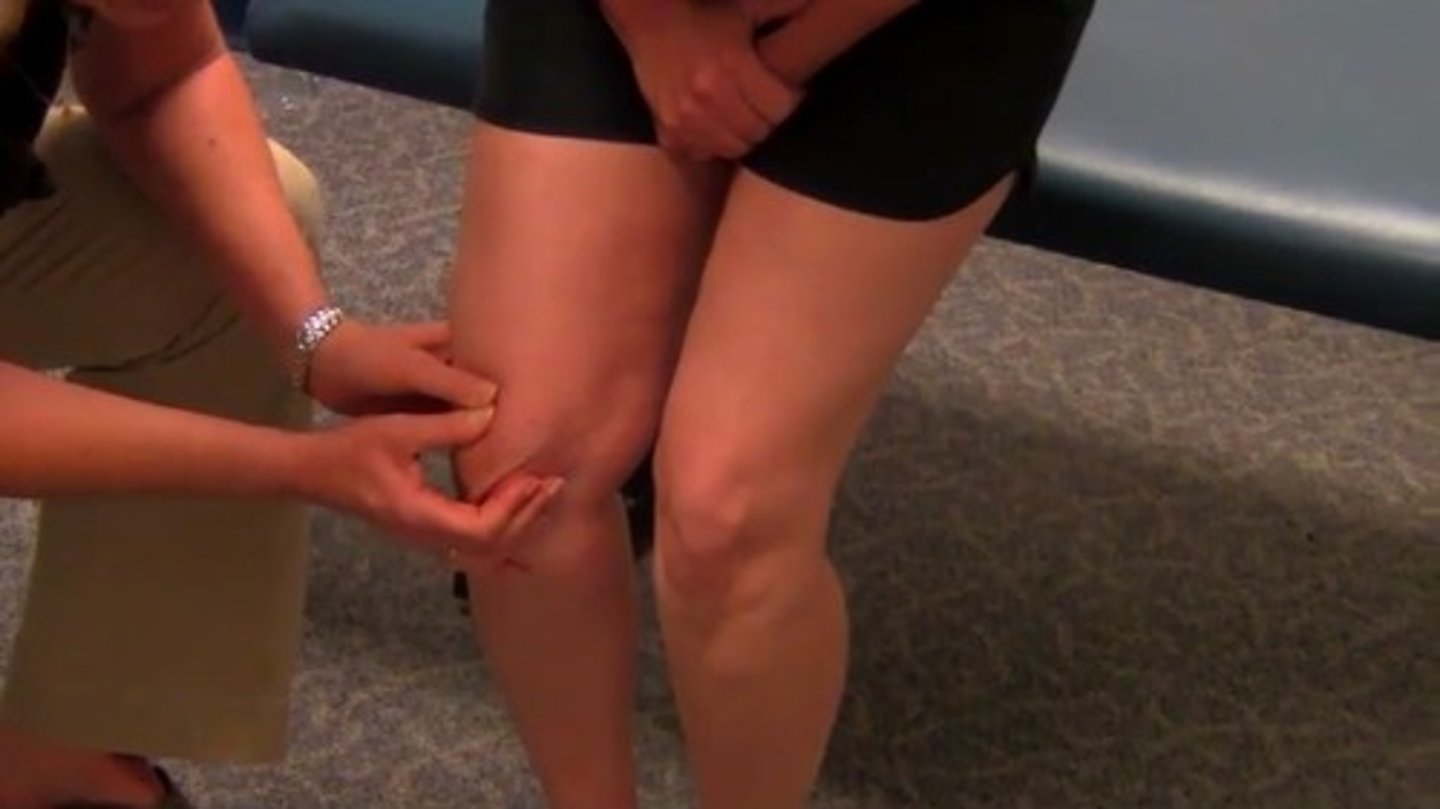
Crepitus and pain
What is a (+) Waldron test?
Compression -- patellofemoral pain syndrome
Which special test is this? What does it test?
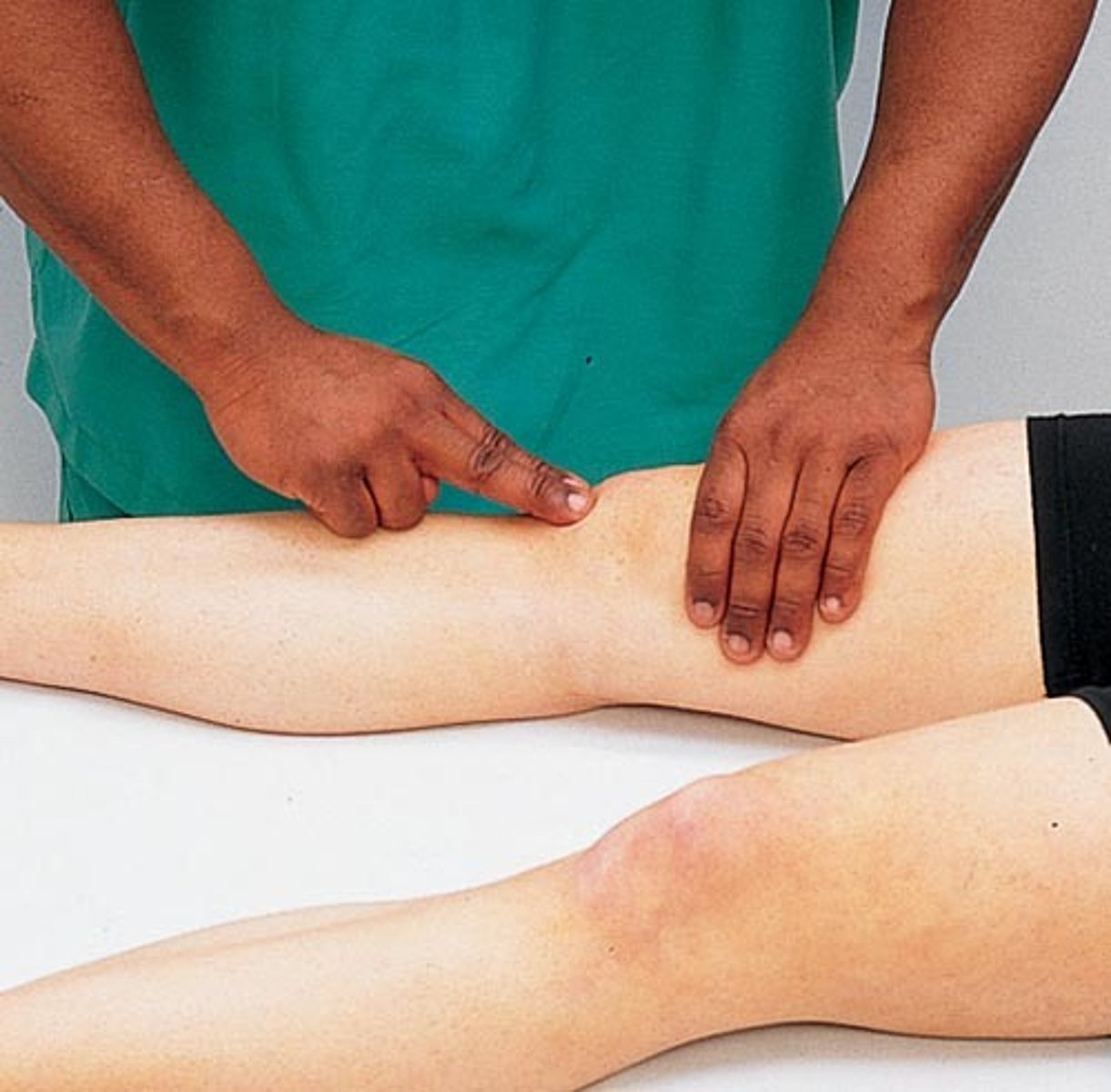
Reproduction of pain
What is a (+) compression test?
Clarke or patellar grind -- patellofemoral pain syndrome
Which special test is this? What does it test?
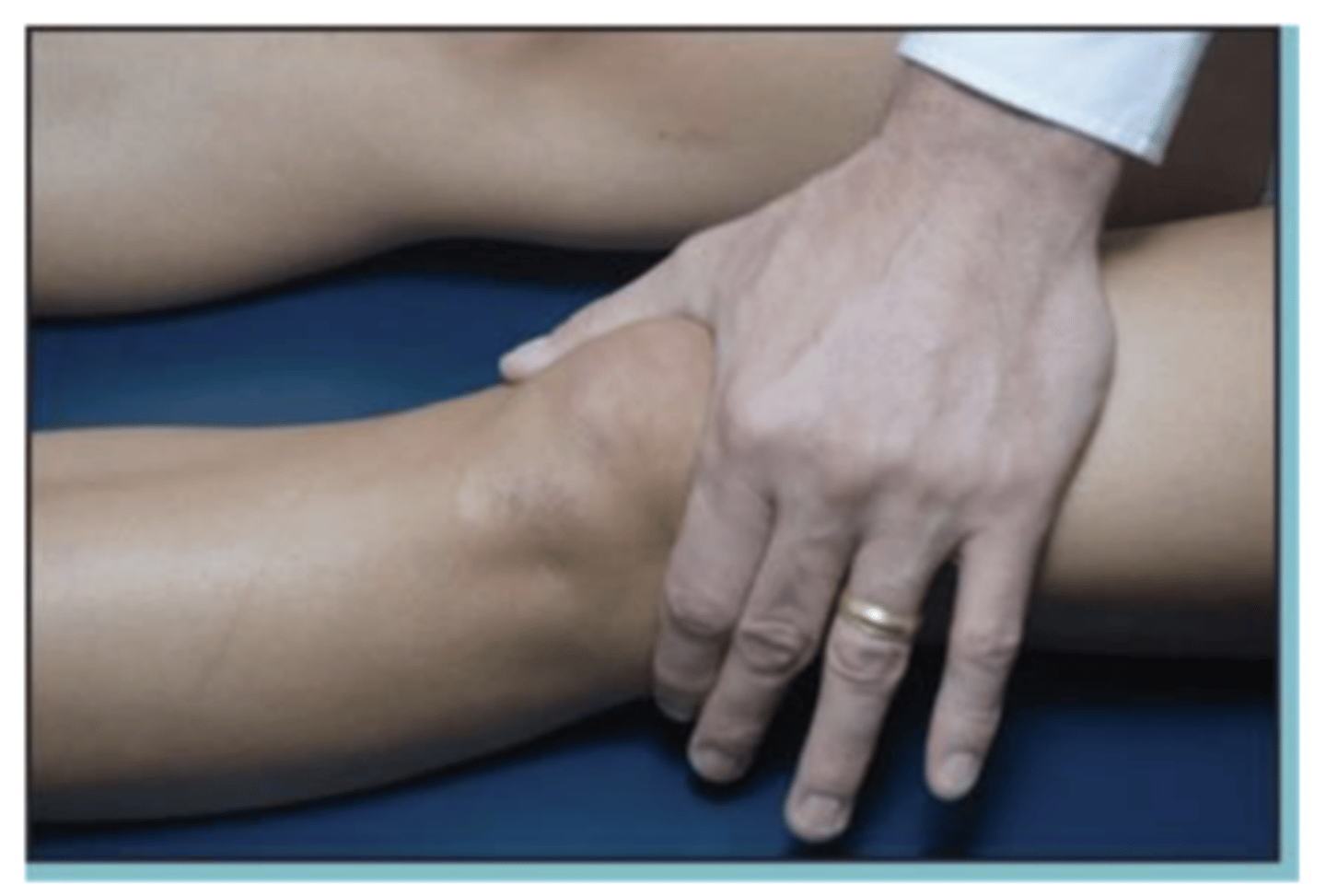
Reproduction of pain
What is a (+) clarke or patellar grind test?